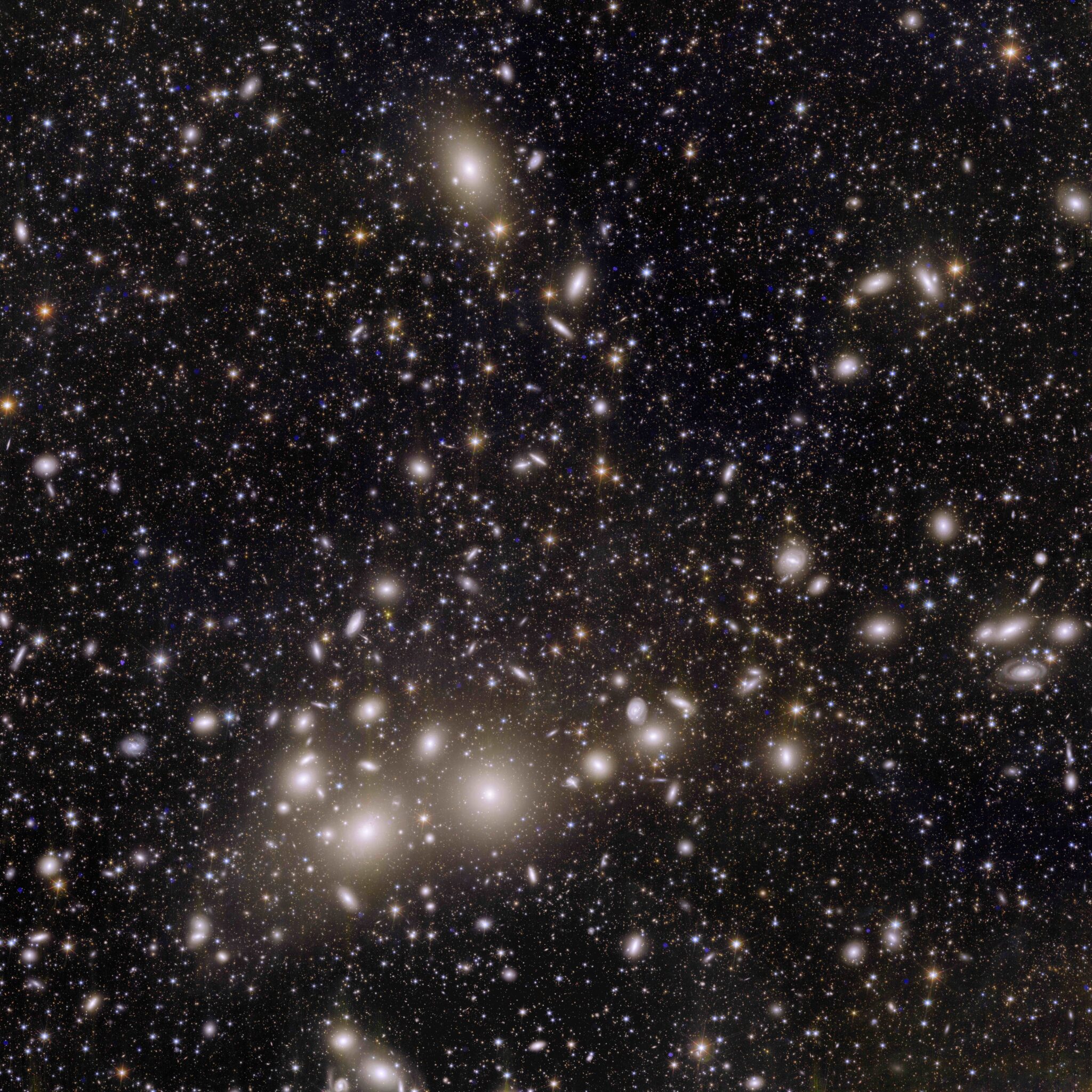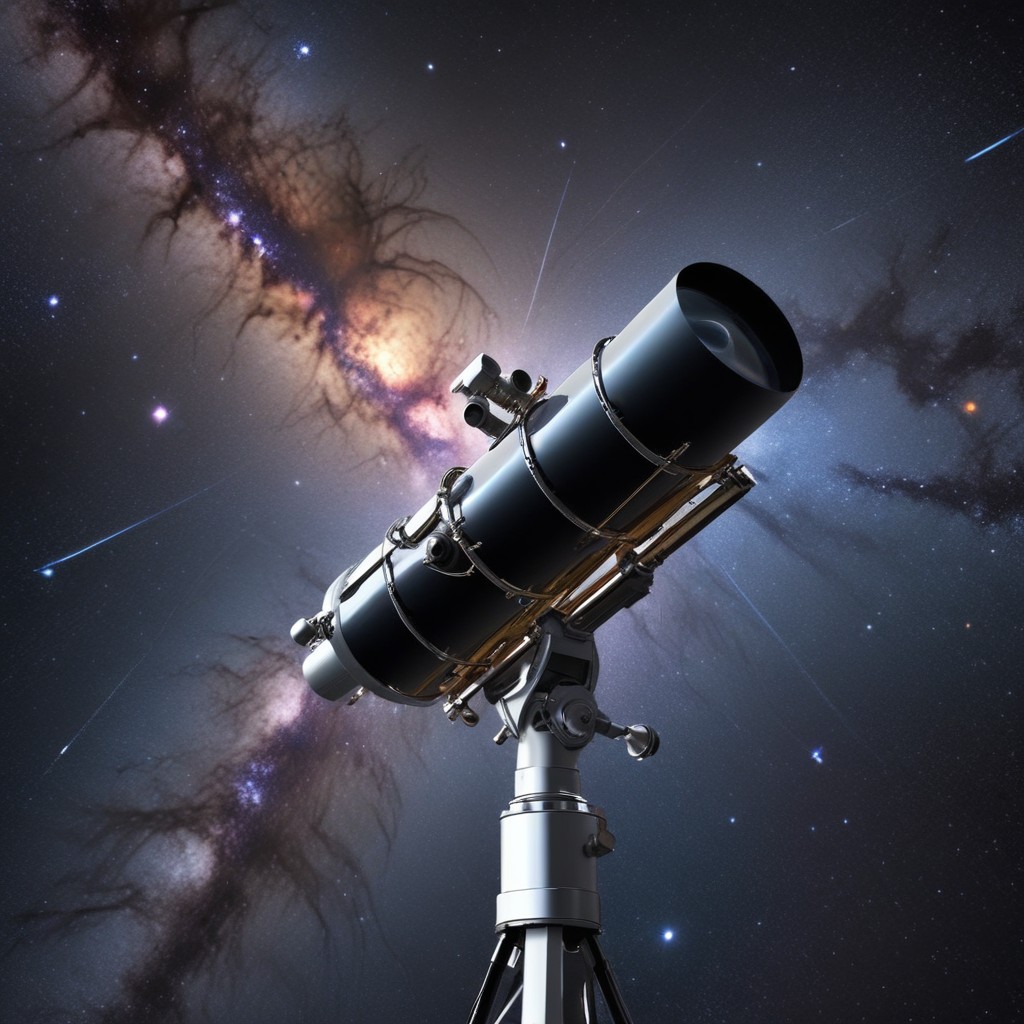Humanity had gazed skyward at the vast expanse of stars and planets for millennia. Yet the true nature of the universe remained shrouded in mystery. This all changed with the invention of the telescopes, which served as transformative tools that became our cosmic eye and altered the landscape of astronomical discovery.
Most astronomers use telescopes on the ground to look through the Earth’s atmosphere to see into space. The atmosphere blocks out light from part of the Electromagnetic Spectrum. These telescopes offer a clear view of the night sky, allowing for capturing stunning celestial phenomena and collecting valuable data. ([1], n.d.)
Discovery of Galileo Galilei
In the 17th century, he improved his telescope and witnessed the previously unseen craters on the Moon, four moons of Jupiter (Io, Europa, Ganymede, Callisto), and sunspots on our host star. These discoveries challenged the prevailing geocentric model, where Earth was believed to be the center of the universe. Galileo’s observations supported the heliocentric model, placing the Sun at the center of our solar system. ([2]
Perhaps the most groundbreaking discovery made with a ground-based telescope was achieved by Edwin Hubble in 1929. By observing distant galaxies, he noticed their light redshifted, indicating they were moving away from Earth.
This realization led to the theory of the expanding universe and resulted in the formulation of the Big Bang theory, which is our current understanding of the universe’s origin.
The Role of Radio Telescopes
Radio telescopes like the Atacama Large Millimeter/submillimeter Array (ALMA) play a crucial role in cosmic exploration. Unlike optical telescopes that detect visible light, radio telescopes pick up on the faint radio waves emitted by objects in space, including:
Interstellar Gas and Dust Clouds
These clouds, invisible to optical telescopes, are crucial sites for star and planet formation. By observing them, ALMA observes the hidden processes of stellar nurseries. It also discovered a supermassive black hole in the Messier 87 galaxy. ([3], n.d.)

Exoplanetary atmospheres
Radio telescopes detect molecules in the atmospheres of exoplanets, potentially hinting at the presence of conditions suitable for life. The large exoplanet TVLM 513b was discovered in 2020. ([4]
Giant Leaps with the Very Large Telescope (VLT)
With its four-unit telescope working together, the VLT is one of Earth’s most powerful optical telescopes. This ground-based marvel has made significant contributions to our understanding of the universe, including:
Formation of Galaxies
Detailed observations of distant galaxies by the VLT have provided insights into the early universe and the processes that led to the formation of galactic structures. Chile’s Very Large Telescope (VLT) discovered a cluster of 20 galaxies. ([5]
Universe with Space Telescopes
Space-based telescopes like the James Webb Space Telescope (JWST) and Hubble Space Telescope (HST) offer unparalleled advantages as they operate above Earth’s atmosphere; they are free from light pollution, atmospheric distortions, and the limitations of the visible light spectrum.
JWST has more resolution and can observe infrared light of longer wavelengths than HST. This allows them to peer deeper into space and observe objects invisible from Earth.
Gazing Back in Time with JWST and Hubble
With their ability to observe infrared light, JWST and HST act as time machines. By capturing light that has traveled for billions of years, they offer a glimpse into the universe’s infancy. Their observations have yielded incredible discoveries, including:
The first Stars and Galaxies
JWST and HST have captured images of some of the first galaxies formed after the Big Bang, allowing us to study the universe’s earliest stages of evolution. JWST has confirmed a proto-cluster of seven galaxies at a distance that astronomers refer to as redshift 7.9, or a mere 650 million years after the Big Bang, as shown in the figure. ([6], n.d.)

Active Galectic Nuclie (AGN)
Space telescopes have observed these powerful, energy-emitting regions at the center of some galaxies in incredible detail, revealing insights into their formation and behavior. JWST reveals active supermassive black holes that were surprisingly rare in the early universe. ([7], n.d.)
Supernovae and Nebulae
The powerful explosions mark the end of a star’s life and enrich the interstellar medium with the elements necessary for new star and planet formation. Additionally, space telescopes have captured images of various stellar nurseries. ([8], n.d.)
The Future of Telescopic Exploration
While the discoveries made by JWST and Hubble are truly remarkable, Euclid promises to push the boundaries of our understanding even further. Euclid will act as a cosmic cartographer mapping the distribution of dark matter, the mysterious invisible substance thought to comprise a significant portion of the universe’s mass.

The Synergy of Ground and Space
The synergy between ground-based and space-based telescopes allows astronomers to create a more complete picture of the cosmos. For example, a space telescope might detect a distant galaxy, and a ground-based telescope could then be used to measure its redshift, providing information about its distance and the expansion of the universe.
Technological advancements in radio telescopes, like the next-generation Square Kilometer Array (SKA), will offer even greater sensitivity and resolution, revealing faint and previously undetectable objects.
The Spark of Curiosity— Astronomy’s Impact on Science and Society
The journey of telescopic exploration has not only revolutionized our understanding of the universe but has also significantly impacted science and society as a whole; it has applications in optics, engineering, and materials, from medical imaging to fiber optics communications.
Telescopic discoveries spark curiosity by inspiring future generations to explore, innovate, and push the boundaries of human knowledge.
As we continue to develop more powerful telescopes and refine our observational techniques, the coming decades promise even more groundbreaking discoveries. The universe holds countless secrets waiting to be unveiled, and telescopes remain our powerful tools to unlock them.
References
- Retrieved from the school’s observatory; Ground telescope: https://www.schoolsobservatory.org/learn/eng/tels/groundtel.
- Retrieved from [10]: https://esahubble.org/images/heic0611b/
- Retrieved from NASA: https://science.nasa.gov/solar-system/galileos-observations-of-the-moon-jupiter-venus-and-the-sun/
- Retrieved from Britannica: https://www.britannica.com/science/radio-telescope
- Retrieved from Max Planck Gesellschaft: https://www.mpg.de/15245755/vlba-radio-telescope-discovers-exoplanet
- Retrieved from CERN COURIER: https://cerncourier.com/a/vlt-discovers-early-galactic-cluster/
- Retrieved from NASA Webb: https://www.nasa.gov/universe/webb-reveals-early-universe-prequel-to-huge-galaxy-cluster/
- Retrieved from Supermassive Galaxy: https://www.space.com/james-webb-space-telescope-reveals-active-supermassive-black-holes-were-surprisingly-rare-in-early-universe
- Retrieved from ESA HUBBLE: https://esahubble.org/images/archive/category/nebulae/
- Retrieved from ESA HUBBLE: https://www.esa.int/Science_Exploration/Space_Science/Euclid/Euclid_s_first_images_the_dazzling_edge_of_darkness
Similar articles: James Webb Space Telescope: A curious urge of humanity to know itself

Bisma Ishaq is an undergraduate student in physics at Government College University Lahore. Her interests lie in the theoretical aspects of Astronomy, specifically in “Multimessenger Astronomy.” She has demonstrated at outreach events organized by the Khawarizmi Science Society and the Lahore Astronomical Society. Bisma has participated in an Astronomy camp conducted by the Center of Astrophysics and Space Science at New York University. She serves as the Senior Vice President of the Astronomy Society GCU.

